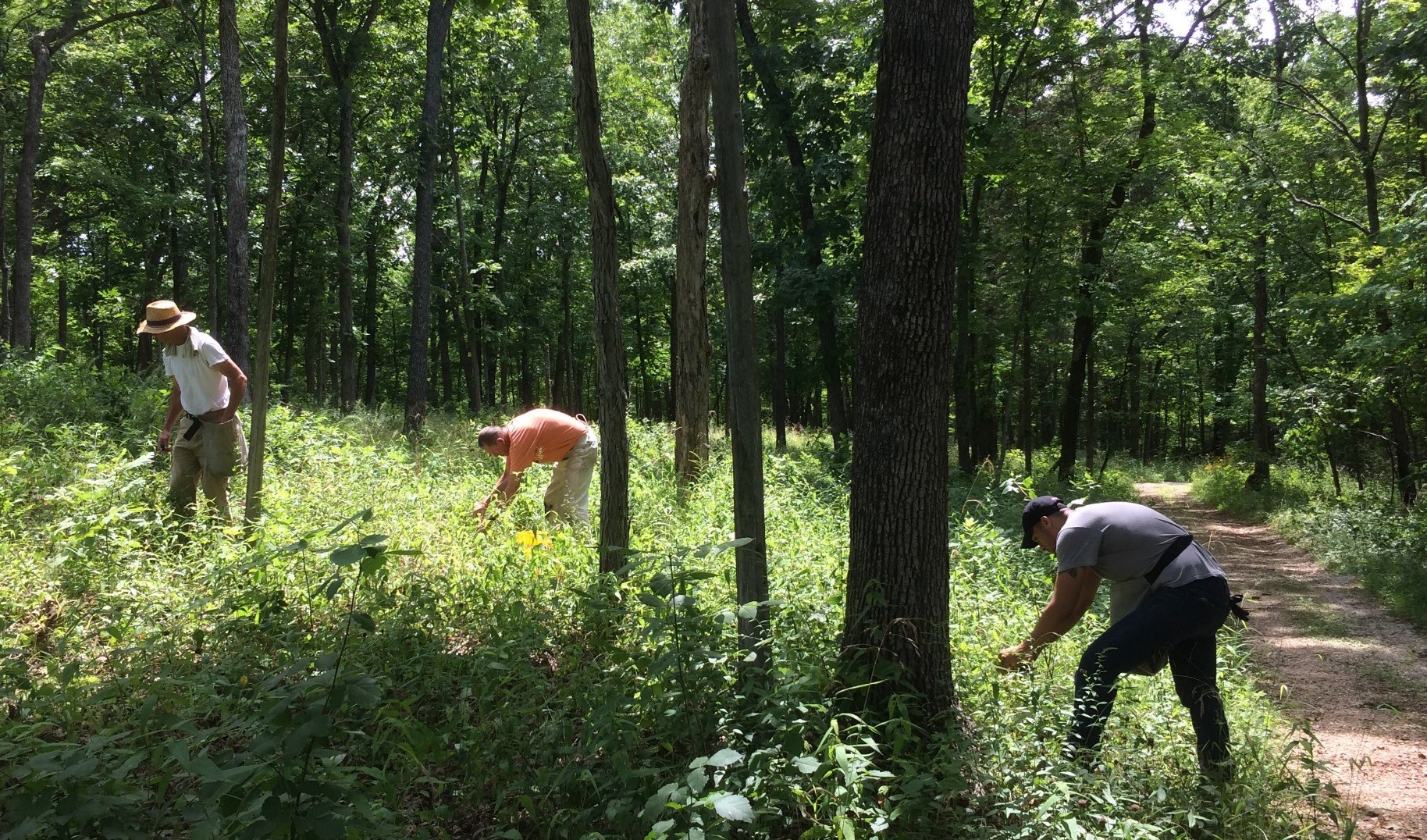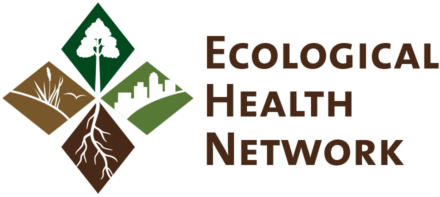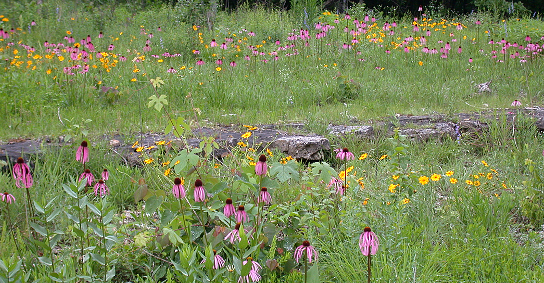Shaw Nature Reserve
Location
Ozark Border Region, St. Louis Metro Area, USA
Category
Site
Ecosystems
Temperate woodlands and grasslands
Land Tenure
Private reserve, Missouri Botanical Garden
Contact
Quinn Long
Website
Shaw Nature Reserve is located on the Meramec River near the city of St. Louis, in a region known as the Ozark Border. This region encompasses roughly 13 percent of the state of Missouri and divides the rolling prairie lands of northern Missouri from the Ozark Plateau. The 2400-acre Nature Reserve is a division of the Missouri Botanical Garden with a mission to “inspire responsible stewardship of our environment through education, restoration and protection of natural habitats, and public enjoyment of the natural world”.
Ecological Context
Because of its geologic history and location within an ecological transition zone, the Nature Reserve has a great diversity of plant and animal communities. These include: woodland and forest in upland areas; bottomland forest in the flood plain of the Meramec River; dolomite glades; meadows; tallgrass prairie; ponds; and riverine and riparian communities.
Restoration Activities at the Nature Reserve
More than half of the Nature Reserve’s 2400 acres are actively managed for native biodiversity. By the year 2030, Shaw Nature Reserve aims to initiate native habitat management and ecological restoration across the entire Nature Reserve, having aligned its Strategic Plan for Ecological Restoration with the UN Decade on Ecosystem Restoration 2021-2030. Four main focus areas drive on-the-ground management activities.
Prescribed burning
Prescribed fire is an essential land management tool that mimics the natural processes responsible for shaping our contemporary landscapes, flora, and fauna. After more than a century of exclusion and suppression, a trained and professional fire program skillfully puts fire on the landscape each dormant season at the Nature Reserve. Trained staff and volunteers safely and effectively burn hundreds of acres of prairies, woodlands, glades, and wetlands each year to achieve ecological objectives and promote biological diversity.
Native seed collection and sowing
The collection and sowing of native seed is necessary when an ecosystem experiences prolonged or intense disturbance, which often reduces diversity and abundance of native species. This is true at the Nature Reserve, where native seed collection and sowing is used for habitat improvement and plant diversity enhancement. More than 600 pounds of seed from 200 species of native plants are collected annually. In the last 4 years we have sown 1,945 pounds of seed from 302 native species over 85 acres of degraded habitat at Shaw Nature Reserve.
Invasive species control
Invasive species degrade habitat and out-compete native plants. Problem species at the Nature Reserve include honeysuckles (Lonicera maackii and L. japonica), privet (Ligustrum obtusifolium) and wintercreeper (Euonymus fortunei), among others. We employ strategic and methodical control measures ranging from simple mechanical approaches to herbicide application and use of large equipment. Control measures are specifically timed and calibrated for each target species and are guided by best practices.
Invasive species control also extends to aggressive native plants. Fire suppression in past decades allowed Eastern red cedar (Juniperus virginiana) to proliferate in some upland areas, encroaching into glades and creating overly dense woodlands. We have a program to thin cedar stands during winter months. This complements prescribed burning and is meant to help return upland areas to conditions resembling those described in early historical accounts—with more open habitat and greater herbaceous plant diversity.

Community-driven volunteer stewardship
In November 2016, Shaw Nature Reserve began hosting ecological restoration volunteer workdays each Saturday, year-round. Since then, 189 different volunteers have participated in restoration workdays contributing 6,385 total volunteer hours. We now host workdays three days a week and work in all corners of the Nature Reserve. We emphasize building a volunteer community because, while ecological restoration involves ecosystems and plant communities, the human component cannot be overvalued or understated. The sense of shared achievement, collective hard work and collaborative success enhances community and serves to further engage volunteers working to restore biodiversity at the Nature Reserve.
More details about habitat management and restoration activities at Shaw Nature Reserve can be found at: http://www.missouribotanicalgarden.org/visit/family-of-attractions/shaw-nature-reserve/conservation-at-shaw-nature-reserve/habitat-restoration.aspx

